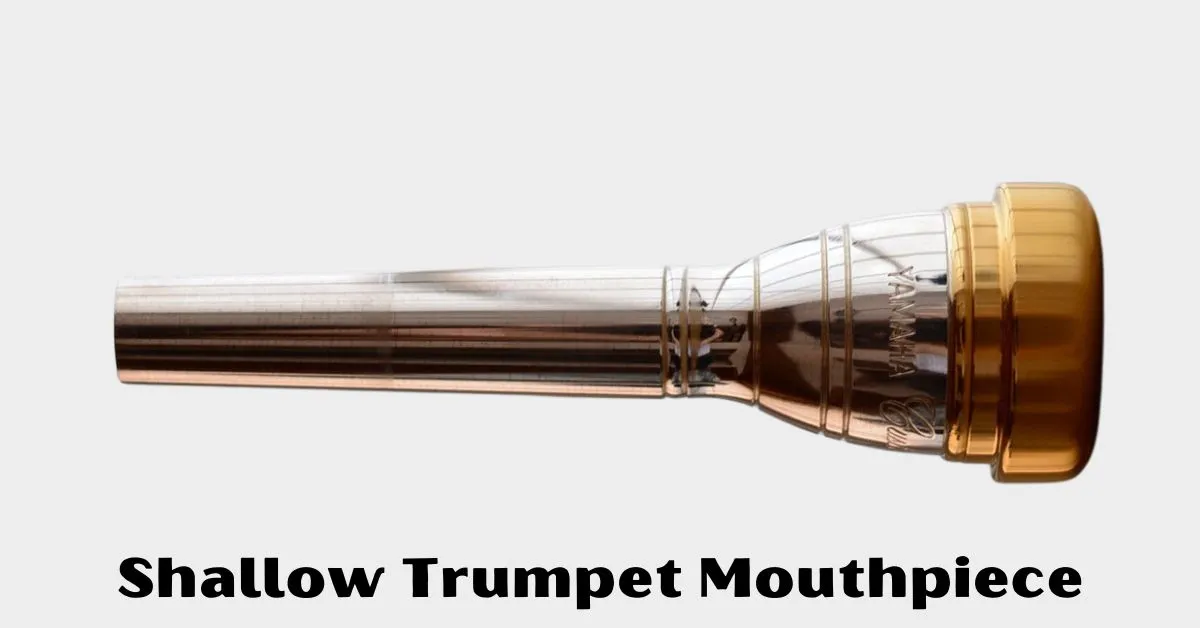When it comes to playing the trumpet, the mouthpiece is an essential component that greatly affects the sound produced. The shallow trumpet mouthpiece has gained popularity among trumpet players for its unique design and benefits.
In this article, we will introduce you to the shallow trumpet mouthpiece, its characteristics, and advantages over other mouthpieces. Whether you are a beginner or a seasoned player, understanding the differences between mouthpieces can help you improve your playing and achieve the desired sound. So, let’s dive in and explore the world of shallow trumpet mouthpieces.
What is a shallow trumpet mouthpiece?
A trumpet mouthpiece is a critical component of a brass instrument that plays a crucial role in determining the instrument’s sound quality and playability. A shallow trumpet mouthpiece is a specific type of mouthpiece that has become increasingly popular among trumpet players in recent years.
In this article, we will explore what a shallow trumpet mouthpiece is, how it differs from other mouthpieces, and why it may be a good option for certain players.
Whether you are a professional trumpet player or a beginner looking to improve your sound, understanding the benefits and drawbacks of a shallow trumpet mouthpiece can help you make an informed decision about what type of mouthpiece is best for you.
Benefits of using a shallow mouthpiece
Using a shallow mouthpiece can offer several benefits to musicians, particularly brass players. A shallow mouthpiece has a shorter cup depth, which means less of the mouthpiece is inserted into the player’s mouth. This can lead to improved tone, easier high notes, and increased endurance.
One of the primary benefits of using a shallow mouthpiece is improved tone. The shorter cup depth allows for a more focused and direct airflow, which can result in a brighter and more powerful sound. This is particularly important for brass players who need to project their sound over a large ensemble.
In addition to improved tone, a shallow mouthpiece can also make it easier to play high notes. The shorter cup depth allows for a more efficient and controlled airflow, which can help players hit the upper register with greater ease and accuracy. This is especially beneficial for trumpet and cornet players who need to play high notes frequently.
Finally, using a shallow mouthpiece can increase endurance. Because less of the mouthpiece is inserted into the player’s mouth, there is less pressure on the lips and facial muscles. This can help prevent fatigue and allow players to play for longer periods of time without experiencing discomfort or pain.
Overall, the benefits of using a shallow mouthpiece can be significant for brass players. Improved tone, easier high notes, and increased endurance are just a few of the advantages that can be gained by making the switch to a shallower mouthpiece.
How to choose the right shallow mouthpiece for you
Choosing the right shallow mouthpiece for your instrument is crucial to achieving the desired sound and performance. A shallow mouthpiece can produce a brighter, more focused sound and help with higher register playing, but it may not be suitable for all players or musical styles.
To choose the right shallow mouthpiece, consider factors such as the instrument you play, your playing style, and the type of music you perform. It is also important to try out different mouthpieces and seek advice from experienced players or music instructors.
Factors such as the material and facing curve of the mouthpiece can also affect the sound and performance, so it is important to carefully evaluate these aspects as well. Ultimately, choosing the right shallow mouthpiece requires a combination of research, experimentation, and consultation with experts to find the best fit for your individual needs and preferences.
Tips for playing with a shallow mouthpiece
Playing with a shallow mouthpiece can be challenging for many musicians, particularly those who are used to playing with deeper mouthpieces. However, with the right tips and techniques, it is possible to achieve a clear, powerful sound while playing with a shallow mouthpiece.
One important tip is to focus on proper embouchure formation, which involves using the muscles around the mouth and lips to create a tight seal around the mouthpiece. This will help to ensure that the air flows smoothly through the instrument, resulting in a clear, consistent sound.
Another important technique is to use proper breathing techniques, such as diaphragmatic breathing, which involves breathing from the diaphragm rather than the chest. This will help to ensure that the air flows evenly through the instrument, allowing for a smoother, more controlled sound.
It is also important to pay attention to the position of the tongue, which can have a significant impact on the sound produced while playing with a shallow mouthpiece. By keeping the tongue low and relaxed, it is possible to achieve a warmer, more resonant tone.
Finally, it is important to practice regularly and gradually build up endurance, as playing with a shallow mouthpiece can be more physically demanding than playing with a deeper mouthpiece.
By incorporating these tips and techniques into your practice routine, you can improve your ability to play with a shallow mouthpiece and achieve the clear, powerful sound you are looking for.
Common misconceptions about shallow mouthpieces
Common misconceptions about shallow mouthpieces refer to the false beliefs or misunderstandings that people have about mouthpieces used in musical instruments, particularly those with a shallow cup depth. Some of the common misconceptions include that shallow mouthpieces produce a thin or weak sound, that they are only suitable for high notes, and that they are difficult to play.
However, these beliefs are not entirely accurate as shallow mouthpieces can produce a range of sounds depending on the player’s skill and technique. Moreover, they can be used for a variety of musical styles and not just limited to high notes.
Additionally, while shallow mouthpieces may require some adjustments in playing technique, they are not necessarily more challenging to play than deeper mouthpieces. It is important for musicians to understand the true nature of shallow mouthpieces to make informed decisions when selecting mouthpieces for their instruments.
Conclusion and final thoughts
Conclusion and final thoughts are essential components of any written work, including research papers, essays, and even articles. It is the final opportunity for the writer to summarize their main points, restate their thesis, and leave a lasting impression on the reader.
In conclusion, the conclusion serves as the final word on the topic and provides closure to the reader. It is essential to ensure that the conclusion is not merely a reiteration of the introduction but instead provides a unique perspective on the topic. A well-written conclusion should tie together the main points of the work and leave the reader with a lasting impression.
In final thoughts, the writer can provide additional insights, recommendations, or suggestions for further research. It is an opportunity to reflect on the topic and offer a personal opinion or perspective. Final thoughts can also serve as a call to action, encouraging the reader to take action or consider the topic from a different angle.
Overall, the conclusion and final thoughts are crucial elements of any written work, and they should be given careful consideration to ensure that they leave a lasting impression on the reader.

Welcome to my blog! My name is Marjona Ferdows and I am a passionate trumpet lover. I have been playing the trumpet since I was a child, and it has always been one of my greatest joys in life. My blog is a place where I want to share my passion for the instrument with all of you. Here you will find articles about using the trumpet, tips and techniques, reviews on different models, and more.

